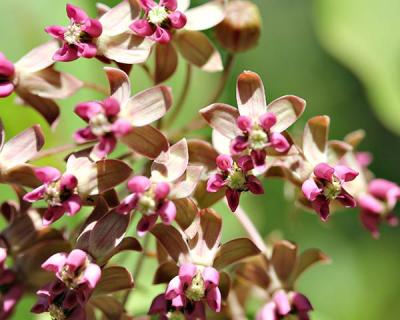Nature Notes: A Lushness Value of Nine

It rained and winded Monday, not a good day for taking pictures of plants and flowers. But it was okay. We needed the rain and I hope it won’t be the end of it during the coming summer. It was okay because I had finished doing my annual end-of-spring gypsy moth and groundcover monitoring for 2015.
I covered at least 70 miles of back-road woods on the South Fork by car looking for signs of defoliation. I also walked several miles of trails winding through wooded plots such as Barcelona and the South Fork moraine, or Bridgehampton hills and noticed no significant defoliation so far.
Next year could be different. As we were coming back from Pennsylvania two Saturdays ago, we saw some significant defoliation along the Southern State Parkway and the Sunrise Highway in Nassau County and western Suffolk. Spring’s prevailing southwesterlies generally move the gypsy moth caterpillars on their spider-web threads in an easterly direction soon after they hatch. Next year the defoliation should occur closer to home.
We haven’t had a serious gypsy moth event since 2001, so it is high time for another. Fifteen years is a long time between cycles. On that same trip back from Pennsylvania we saw several pitch pines recently dead all the way onto the South Fork — done in by the southern pine beetle, the next scourge to hit our forests.
The understory in my trips along South Fork roads and trails was dominated by blueberries and huckleberries. The coverage ranged from 50 to 90 percent, and I gave them a lushness value of 9 on my 10-point scale. Despite what the forester from the United States Department of Agriculture had to say at an East Hampton Village forum last year about the impact of deer on our understory, I saw little sign of pillaging by deer throughout Southampton and East Hampton Towns.
One might say, well the deer don’t like blueberries and huckleberries. What about the flowering plants or woodland forbs? On Sunday I took a walk with Vicki Bustamante and Callie Velmachos, two local naturalists who know their plants as well as I do. We walked along the old Long Island Rail Road spur trail that connected Bridgehampton with Sag Harbor and which is the stomping grounds for the Friends of the Long Pond Greenbelt. Either there are no deer in the large area of woodlands along the east side of the Bridgehampton-Sag Harbor Turnpike or the deer are leaving those plants alone out of respect for the Friends of the Long Pond Greenbelt.
We saw the yellow flowers of rattlesnake-weeds, the pink-purple flowers of the undulate-leaved milkweed, the white-green flowers of the parasitic cowwheats, as well as the yellows of wood sorrels, whorled loosestrife, and Canada and bushy frostweeds, the whites of spotted wintergreen, and the reds of the dogbanes, to name a few. As far as we could tell, all were untouched. Dense woodlands on Long Island generally have very few flowers. Those that flower early, before the trees leaf out, such as the may pinks, the violets, Canada mayflowers, and red-berried wintergreens, had already dropped their blooms. Nevertheless, their foliage was quite intact and not nibbled on, as far as we could tell.
No, we didn’t see any orchids, but orchids on Long Island have always been few and far between, when deer were rare and when deer became more common.
After such a harsh winter as the one we’ve just been through, it is uplifting to find the forest floor in such good shape and the green-leaved trees above them waving proudly. It appears as if we have been spared a second calamitous season and summer as well. I purposely didn’t mention the traffic and the hordes overrunning us from the west. I don’t want to put a hex on summer.
Larry Penny can be reached via email at [email protected].
